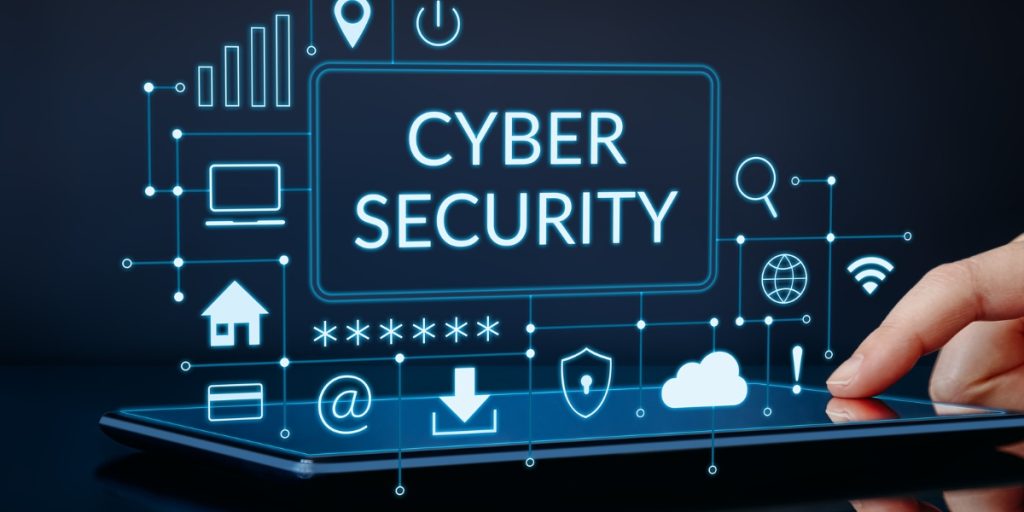In today’s digitally interconnected world, the importance of cyber security cannot be overstated. As businesses and individuals increasingly rely on technology, the need to protect sensitive data and digital assets from cyber threats has become paramount. In this blog post, we will introduce the basics of cyber security, exploring its significance, common threats, and essential preventive measures. AlphaClick, a leading provider of Managed IT Services, IT Support, and Computer Security, comprehensively covers this critical area of protection. If you want to know more about our services, don’t hesitate to contact us.
Understanding Cyber Security

Cyber security refers to the practice of protecting electronic data, systems, and networks from unauthorized access, theft, damage, or disruption. It encompasses a wide range of measures and technologies designed to ensure the confidentiality, integrity, and availability of digital assets.
The Importance of Cyber Security

In today’s interconnected landscape, cyber threats are pervasive and constantly evolving. The consequences of a successful cyber-attack can be devastating, leading to financial losses, reputational damage, and legal ramifications. To safeguard sensitive information and maintain business continuity, organizations and individuals must prioritize cyber security.
05 Common Cyber Security Threats

- Malware: Malicious software, such as viruses, worms, ransomware, and spyware, can infect systems, steal data, or disrupt operations. Malware can be distributed through malicious email attachments, infected websites, or compromised software.
- Phishing: Phishing attacks involve deceptive emails or messages that trick recipients into revealing sensitive information, such as login credentials or financial details. Phishing attempts often impersonate trusted entities, such as banks or well-known brands, and rely on social engineering techniques to manipulate victims.
- Social Engineering: Social engineering exploits human psychology to manipulate individuals into divulging confidential information or granting unauthorized access. This can involve impersonation, pretexting, or eliciting information through persuasion or coercion.
- Denial of Service (DoS) Attacks: DoS attacks overwhelm networks or systems with a flood of traffic, rendering them inaccessible to legitimate users. Distributed Denial of Service (DDoS) attacks amplify the impact by using multiple sources to generate a massive volume of traffic.
- Insider Threats: Insider threats involve malicious or negligent actions by individuals within an organization, potentially compromising data security. These threats can arise from disgruntled employees, careless behavior, or inadvertent sharing of sensitive information.
05 Essential Cyber Security Practices

- Strong Passwords and Authentication: Enforce the use of complex passwords and enable multi-factor authentication to strengthen access controls. Encourage users to avoid common passwords and periodically update them.
- Regular Software Updates and Patching: Keep operating systems, applications, and firmware up to date to address vulnerabilities and security flaws. Software vendors regularly release patches and updates to fix known vulnerabilities, and prompt installation is crucial to prevent exploitation.
- Data Encryption: Encrypt sensitive data, both in transit and at rest, to prevent unauthorized access even if it is intercepted or stolen. Encryption algorithms scramble data into unreadable formats, ensuring that only authorized parties with the decryption key can access the information.
- Employee Training and Awareness: By consistently educating employees about cyber security best practices, organizations empower their workforce to identify phishing attempts, understand the significance of using secure Wi-Fi networks, and effectively recognize social engineering tactics. Regular training sessions and awareness campaigns help create a security-conscious culture within the organization.
- Network Monitoring and Intrusion Detection: Implement robust monitoring systems to identify suspicious activities, detect intrusions, and respond promptly to potential threats. Network monitoring tools can track traffic patterns, flag anomalous behavior, and provide real-time alerts to security teams.
The Role of Managed IT Services in Cyber Security

With the ever-increasing complexity of cyber threats, organizations often turn to Managed IT Services providers like AlphaClick for comprehensive cyber security solutions. These services offer expert guidance, proactive monitoring, threat detection, incident response, and ongoing maintenance to ensure optimal protection. Managed IT Services providers, like AlphaClick offer:
- Vulnerability Assessments and Penetration Testing: Identifying weaknesses and vulnerabilities in systems to proactively address potential security gaps
- Security Incident Response: Timely detection, analysis, and response to security incidents to minimize damage and ensure swift recovery.
- Security Audits and Compliance: Assessing security practices and procedures to meet regulatory requirements and industry standards.
- 24/7 Network Monitoring: Constantly monitoring networks for suspicious activities, promptly responding to threats, and minimizing downtime.
Conclusion
As cyber threats continue to evolve, cyber security remains an ongoing challenge. Protecting sensitive data, systems, and networks requires a proactive approach that encompasses robust practices, employee awareness, and cutting-edge technologies. If you’re looking for a service provider that can help you protect your business, get in touch with us today.








